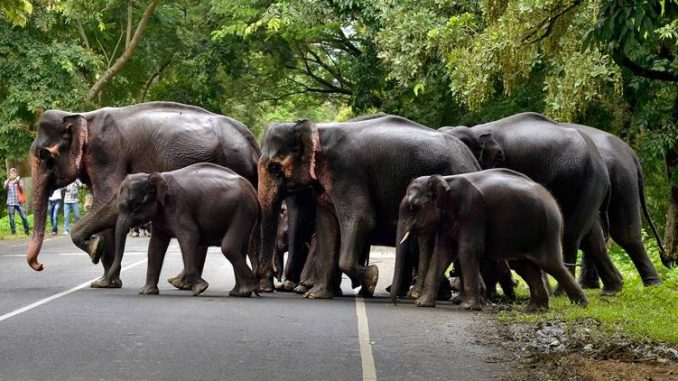
By Mayank Aggarwal
The environment ministry released the result of the Elephant Census 2017, which pegged the elephant population at 27, 312 across 23 states
New Delhi: The population of India’s national heritage animal— the elephant—has dipped in the country in the last five years. The union environment ministry released the result of the Elephant Census 2017, which pegged their population at 27, 312 across 23 states.
This means the population has decreased by about 3,000, compared to last census in 2012. In 2012, the population of Asian elephant, an endangered and protected species in India, was estimated at around 30,000 (29,391-30,711) and in 2007 it was estimated at about 27,670 (27,657-27,682).
As per the International Union for Conservation of Nature (IUCN), the population of Asian elephants was about 41,410 to 52,345 and of that India alone accounts for nearly 60%.
The population was recorded in the following geographical regions: northern, east-central, northeast, and southern.
Among the states, the highest population was recorded in Karnataka (6,049), followed by Assam (5,719) and Kerala (3,054). As far as regions are concerned, the highest population was in southern region (11,960) followed by the northeast region (10,139), east-central region (3,128) and northern region (2,085).
Techniques like direct count, indirect count, waterhole methods and elephant distribution mapping were used for the estimation.
The ministry, however, claimed that the dip in their population is due to use of scientific and uniform methods, which are more credible. It also pointed out that this is only a preliminary report and would be followed by final report in next few months.
“The present report presents results only from the direct count method. This is ongoing work that would require more inputs from the states, detailed analyses, and interpretation… Compiling more accurate population structure data from photographs would require several months of work,” said the report.
It added that the “the results presented here should therefore be interpreted with caution” and at this “stage, comparisons should not be made between results from the 2017 census and the earlier 2012 census”.
The census was released by union minister for environment, forest and climate change (MoEFCC), Dr Harsh Vardhan, on the occasion of World Elephant Day (12 August).
He also launched a nationwide campaign, “Gaj Yatra”, to protect elephants, which will cover 12 elephant range states.
While addressing the gathering, Vardhan urged people to prepare a strategy for a more even distribution of the elephant population in all the states of the country and emphasized that an attempt must be made to bring an end to the man-animal conflict.
He also called for a broader base movement for conservation of elephants.
Experts present at the release of census emphasized the importance of preserving elephant corridors to protect and conserve the species.
The environment minister also released a document—“Agreed points of action on trans-boundary conservation of elephants by India and Bangladesh”—which highlighted the issues on which the two nations have achieved consensus.
The agreed points included constitution of a joint working group within 60 days to evolve and develop protocols and standard operating procedures for trans-boundary conservation and management of elephants.
It also called for facilitating trans-boundary migration along the India-Bangladesh border, establishment of response teams to guide such elephants which may stray into human settlements, ensure sharing of information, discouraging erection of electric fences for protection of agriculture and horticulture crops in the areas falling in identified migratory corridors to prevent death of elephants from electrocution and steps to protect, improve and expand natural habitats for elephants.
India started Project Elephant in 1992 to protect the Asian elephant, its habitat and corridors and address the man-elephant conflict. Since then, the government has been counting the elephant population every four to five years.
Director of the Project Elephant, R.K Shrivastav, said he is hopeful that the exercise will set new standards in population estimation of elephants in India and in other countries as well.
“Quality of data collected during the elephant census will be high. It will be helpful in effective planning of various issues relating to elephant conservation in the country,” he added.
At present, there are 29 elephant reserves across India, covering over 65,000 sq. km. But loss and degradation of wildlife habitats, including the elephant corridors, are increasing the human-elephant conflict.
As per official numbers, in last four years, one human life was lost every day due to the human-elephant conflict. A total of 1,465 humans have been killed in the last four years (2013-14 to 2016-17).
Governments, both at the centre and in the states, have been making efforts to address the issue, but due to the huge pressure for development, natural habitats have suffered. They have even used methods like beehives and chilli fences to prevent the human-elephant conflict—to limited success.
Source: Livemint

The “huge pressure”on developmentcause extincton of elephants sounds vague.